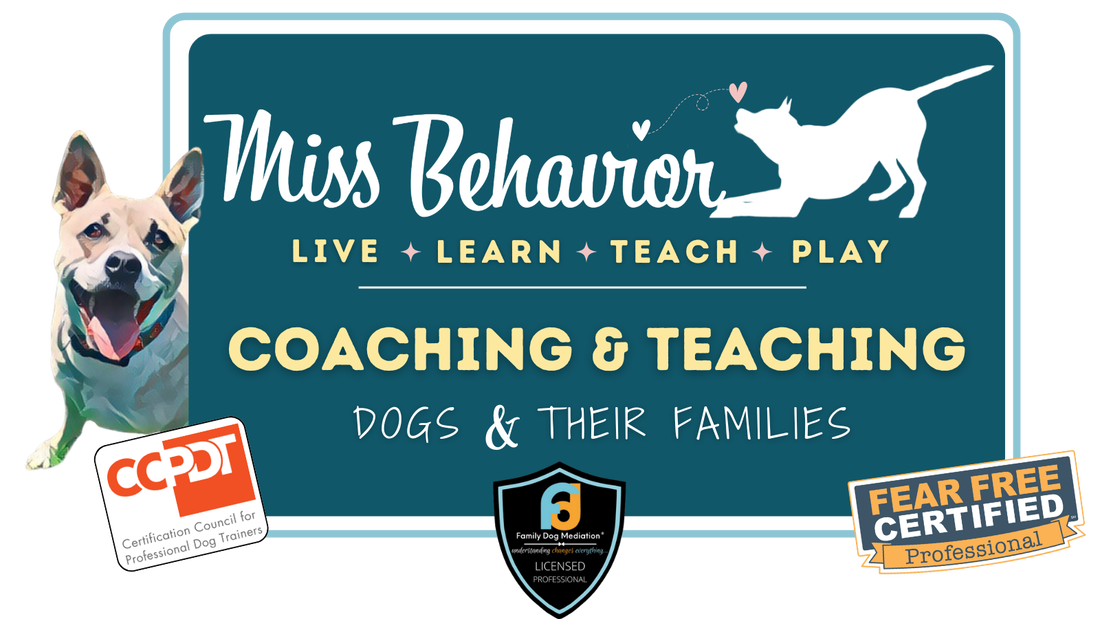Why Genetics Changes the Way We Should Handle DogsIf you’ve ever felt like handling your dog is harder than it should be—whether it’s trimming nails, brushing fur, or walking into the vet’s office—you’re not alone. And more importantly: you’re not doing anything wrong.
The truth is, handling isn’t just about training—it’s about understanding. And that understanding starts with your dog’s L.E.G.S.®
0 Comments
What if I told you that many of your dog’s “behavior problems” aren’t about disobedience at all—but about confusion? What if they just had tons of questions… and we could actually answer them? What if your dog isn’t being dramatic, reactive, or stubborn—they’re just trying to make sense of the modern world?
And what if just talking to our dogs with intention and consistency could actually treat some of those behavior challenges? Because it can. And it does. Welcoming a puppy into your life is an exciting adventure, AND it also comes with important responsibilities. One of the most critical tasks? Socializing your puppy well to ensure they grow up to be confident, adaptable, and resilient to things life may throw at them.
When we welcome a dog into our lives, they quickly become part of the family. They’re our companions, confidants, and partners in adventure. They know all our secrets and are great at keeping them (except when they give away who most often feeds them under the table…)
But as any parent knows, living harmoniously with another being is about more than love. It takes understanding, patience, and a willingness to grow together. That’s where the Pup Parenting Pillars come in—a simple, practical framework I’ve developed to help you build a stronger bond with your dog while creating a joyful, enriching life for both of you. These pillars focus on what matters most in the relationship between you and your pup, making it easier to navigate the ups and downs of life together. 1/7/2025 0 Comments My Core Beliefs About Dog Behavior and Training: Building Trust and Connection with Your DogThe Foundations of Teaching Dogs and Coaching People: Understanding Behavior, Building Trust, and Strengthening Relationships When it comes to dog training and behavior, I believe in a relationship-based approach that prioritizes trust, understanding, and collaboration. Over the years, I’ve developed a set of core beliefs that guide how I help families and their dogs build stronger bonds and overcome challenges. These beliefs are the foundation of everything I do and reflect my philosophy on what it takes to create a happy and harmonious life with your dog. If you’re looking to better understand your dog, address behavior issues, or simply strengthen your connection, these principles may resonate with you, too.
A Guide to a Calm Holiday Season with Your Dog
The holiday season is often described as the most wonderful time of the year, but for dog parents, it can also bring a whirlwind of stress.
Between bustling schedules, a parade of visitors, and the clatter of festive chaos, even the calmest dogs might feel overwhelmed. Thankfully, with a little planning and some creative management, you can navigate the holiday hustle while keeping your dog happy and your household peaceful. Let’s dive into the key strategies to reduce stress for your dog—and yourself—this holiday season. 10/2/2024 1 Comment Choosing a Vet For Your Anxious Pet5 Essential Questions to Ask When Choosing a Vet for your Family Pet TeamChoosing the right vet is not just about medical expertise—it’s about finding someone who understands and prioritizes your dog's emotional well-being, especially if they’re prone to anxiety. While vets and vet techs do their best with the resources and tools they have, they don’t always get the full picture or see what happens behind the scenes at home. That's why it’s so important to remain curious, empathetic, and respectful while advocating for your dog’s needs. Here are five essential questions to ask when selecting a vet for your anxious pet. These will help ensure that the clinic not only takes care of your dog’s physical health but also makes them feel comfortable and safe during every visit. Keep reading... The Behavior Road BlockEver work with your dog, feel like you're making good momentum, and then get STUCK somewhere in the process? Me too. When your dog's training plan doesn’t seem to be working, it’s easy to feel frustrated or unsure about what to change. The EVAL Process is a great tool for analyzing what might be going wrong and where to adjust your approach. It focuses on four key areas: Experience, Value, Action, and Level. By taking a closer look at each of these areas, you can identify the source of the issue and find a path forward. Let's look at the 4 different ways you can EVAL where things are not working...
8/21/2024 1 Comment Happy TetheringWhat is HAPPY Tethering?A Positive Approach to Introducing Your Dog to a Tether Tethering can be a powerful tool in managing your dog’s environment, ensuring their safety, and teaching them to settle in specific areas. Whether you’re preparing for guests, need your dog to stay put while you handle other tasks, or simply want to create a designated safe space for them, tethering, when done right, can be a wonderful tool.
In this blog post, I’ll guide you through the steps to introduce your dog to a tether in a positive and stress-free way. 8/15/2024 0 Comments Let's talk about TOY DOGSWhen we think of Toy Dogs, many might picture petite, cuddly companions perfectly suited for an Instagram photo. However, these small dogs, known for their companionship and charm, carry a rich history and distinct traits that make them much more than just adorable pets.
Toy Dogs include those who were historically bred for the purpose of companionship and as lap dogs, based in ethology, not AKC or UKC standards. These include, but aren't limited to: The Pekingese, Pomeranian, Pug, Chinese Crested, Cavalier King Charles, Papillon, Toy Poodle, Lhasa Apso, Tibetan Spaniel, Shih Tzu, and more. |
|
- Home
- About
- Blog
- Services
- Membership
-
Courses & Freebies
- All Courses
- FREE Boredom Buster Recipes
- COURSE: Building Resilience in your Family Dog
- COURSE: Managing the Leash Walk
- Potty Training COURSE
- Paws Off COURSE
- COURSE: Managing the Leash Walk
- FREE Attention Building Challenge
- FREE Scratchboard Training
- FREE Rest and Recovery Round-Up
- FREE Body Language 101
- Contact
- Home
- About
- Blog
- Services
- Membership
-
Courses & Freebies
- All Courses
- FREE Boredom Buster Recipes
- COURSE: Building Resilience in your Family Dog
- COURSE: Managing the Leash Walk
- Potty Training COURSE
- Paws Off COURSE
- COURSE: Managing the Leash Walk
- FREE Attention Building Challenge
- FREE Scratchboard Training
- FREE Rest and Recovery Round-Up
- FREE Body Language 101
- Contact
Search by typing & pressing enter












 RSS Feed
RSS Feed





